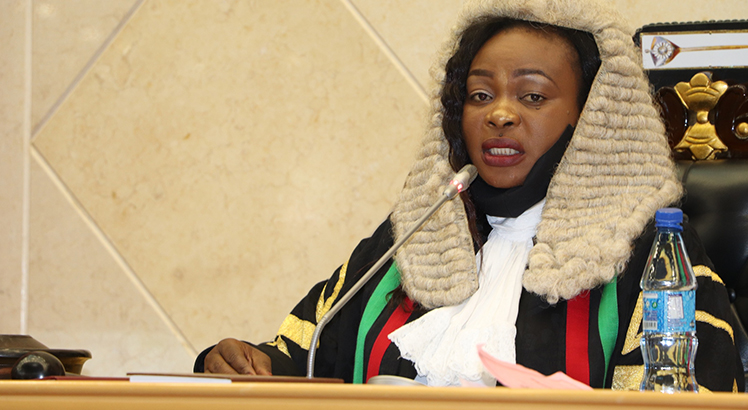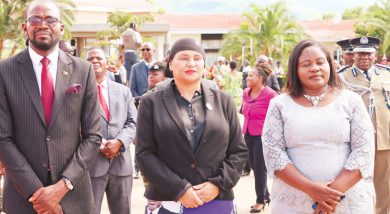Nkhata Bay’s unmet needs for midwives

An award-winning midwife in Nkhata Bay is actually the face of numerous challenges the overwhelmed health workers are facing in rural Malawi where the demand for health services is high.
At Chitheka, about 90km from Nkhata Bay District Hospital, Briston Nkhoma, 35, is singlehandedly ensuring every pregnancy and childbirth is safe. The nurse-midwife technician, who was named the best midwife in the north eastern district this year, sees up to 115 pregnant women every month.
Notwithstanding the support he renders to medical assistant Peter Hara in the outpatient department which sees nearly 110 service seekers every day, the man prides himself to be the brains behind all 15 babies born at the centre every month.
“He is our champion, the reason women enter and exit our understaffed health centre with smiles,” says Traditional Authority (T/A) Kabunduli of the award-winning health worker who has been serving the remote health facility and its surrounding communities since March 24 2011 when he shifted from Nkhata Bay District Hospital.
Travelling to Nkhoma’s workplace, it is clear why district health officer Dr Albert Mkandawire classifies Chitheka Health Centre among hard-to-reach facilities like the lakeside Usiska which can only be reached by boat: It’s is tucked nearly 60km from Kavuzi Trading Centre along Mzuzu-Nkhata Bay tarmac.
The unpaved road that transports visitors off the macadamised way is hilly, muddy, bumpy and usually impassable when it rains. While thousands were commemorating the International Day of the Midwife on March 5, Mkandawire reported that an ambulance from Nkhata Bay had just had a second wheel punctured—meaning a life-or-death patient had to wait with uncertainty for its arrival.
For five years, Nkhoma has made his home the constrained world of work that skilled health workers usually shun in preference for urban settings. It lacks basic facilities. Staff houses have no electricity. Not even solar energy. Besides, there is no marketplace in sight.
While his former classmates in medical school scattered in urban areas have steady access to newspapers and the internet, the lone midwife at Chitheka experiences an information blackout like no other—groping in the dark for training and other career opportunities.
But what motivated him to accept to go to the area his equals fear to tread? What is keeping him there? Is it just the calling?
“I volunteered to come here out of pity for the locals, especially the woman and children, who were dying when there was no midwife,” said the award-winning midwife.
He added: “I myself come from a rural area called Lunjika in Mzimba. The people here need the help like my friends are offering back home. So, what can hold me back from serving other communities equally in need?”
Today, he is happy that no woman has died giving birth during his tenure in the far-flung hills of what is commonly known as a lakeshore district. He cited as “worst scenario” a case in which a woman nearly died of heavy bleeding due to a ruptured uterus, a condition the 2010 Demographic Health Survey (DHS) blames on delays to seek the attention of skilled health personnel.
“Most women delay to come to hospital because the roads are ragged and the terrain is hilly. The area may be sparsely populated, but imagine a woman entering labour has to summon a helper from another hill before they can start off to the nearest health centre,” he said.
The story of Chitheka does not only offer a glimpse of how long walks to healthcare facilities remain a widespread drawback to the country’s quest for safe motherhood and the spectacular sacrifices midwives are making to avert the fatal aftermaths as the clock ticks towards the deadline of the Millennium Development Goals (MDG) target of reducing maternal deaths by 75 percent by next year.
On the flipside, it also shows the gravity of the shortage of skilled workforce in rural localities where the need for healthcare services tends to be high. Being the lone midwife at the facility leaves the father of two so overwhelmed with patients that he usually works non-stop day and night.
When asked for an account of midwifery in the country, Nurses and Midwives Council of Malawi (NMCM) acting registrar Thokozire Lipato confirmed that Nkhoma is spectacular face of his likes scattered in the country’s rural healthcare units.
“The country has about 750 health facilities and most of them are manned by one midwife who also serves as a nurse for various adult sections,” says Lipato.
Nowhere is the situation clearer than in Neno where five of the district’s healthcare outlets have no more than one midwife, she said.
At a time the World Health Organisation (WHO) requires one midwife to handle 175 deliveries a year, the Malawian practitioner delivers an average of 270 every year.
Arithmetically, Nkhoma delivers 180 babies a year, beating the international yardstick by five lives, while those at the district hospital handle at least 11 childbirths every day.
At Mzenga, 30km from Chitheka, one handles about 540 every 12 months, twice the WHO recommendation.
“Our staff may be bigger than Chitheka’s, but the workload confirms that the country needs to train more in order to achieve MDGs on maternal health,” said Mwai Kamwendo, who is in charge of Mzenga Health Centre which has two midwives who preside over the birth of up to three babies per day, nearly 90 a month and 1 080 per year.
As the shortage of health workers lingers, the country is grappling with 675 lives being lost in every 100 000 live births.
“Most of the deaths could be avoided if there were enough and qualified midwives even in rural areas like Chitheka,” says Association of Malawian Midwives (Amami) vice-president Christina Mbezi, saluting the midwives for exceptional performance although the country’s healthcare system is struggling with inadequate staff, medical supplies as well as low investment in the vital profession.
She feels midwives receive low recognition for their role in maternal health.
Minister of Health Catherine Gotani-Hara commends government for reducing the maternal mortality rate from 1 200 per every 100 000 live births slightly 10 years ago to the present levels which UNFPA country representative Rogaia Abdelrahim termed “one of the worst in the region and globally”
“Indeed, there is need to train more health workers and motivate them to remain in rural areas since government has made safe motherhood a priority. However, it is amazing how the likes of Nkhoma are sacrificing their all to ensure no life is lost while giving birth. Technocrats in the ministry need to find ways of motivating them, instead of just promoting their friends in Lilongwe,” said Gotani-Hara.
Nkhoma has never tasted a promotion since he graduated from Malamulo Health College in Thyolo in 2010.
The minister told the media that government and the UN are mulling over new DHS findings which show that maternal deaths have been slashed to 450.
However, UNFPA in-charge says to achieve MDGs, the country must further reduce the figure to 155 deaths in 100 000 live births.
“Lack of skilled personnel contributes to unnecessary delays in seeking medical attention,” said Abdelrahim, citing high fertility rate (nearly five children per woman), low access to contraception (42 percent in rural areas), prevalence of early pregnancies and unsafe abortions for fuelling worsening the quest for zero-maternal death.
Malawi has a Roadmap for Accelerating the Reduction of Maternal Mortality and Morbidity, which stresses government’s commitment towards ensuring that every child is born at the hands of skilled health workers.
NMCM figures show the country has registered a steady increase in the number of midwives—with the council registering 11 122 of them last year up from 6889 in 2005.
However, the impact of the people behind the figures is hardly felt in Nkhata Bay where 70 bedside midwives handle nearly 10 800 deliveries in a year, according to the district health officer.
Mkandawire estimates that the district with 25 health facilities currently needs about 154 midwives.
“This denotes a gap of 84, the unmet need which is likely to worsen with the opening of the new district hospital and the four emergency obstetric centres to be established soon,” said Mkandawire.
The vacancies plaguing health centres hint at the mile the country’s 12 health colleges are facing to train more midwives to make safe motherhood work, says NMCM’s Lipato. Apparently, the schools which enrolled 622 in 2011 welcomed 1 200 students last year.
The increase need to be sustained, says Mkandawire.
Amid low staffing levels and high demand for quality maternal services, the medic reveals that posting trained personnel to hard-to-reach health facilities—such as Chitheka, Usiska, Khondowe, Luweya and Chesamu in Nkahata Bay —is not the only uphill task, but also making them stay put there.
WHO is encouraging the training of young people from rural background to train as health workers to fill the vacancies in their communities.
In Nkhata Bay, the DHO and Management Sciences for Health (MSH) have identified six candidates from the five hard-to-reach areas who are studying a nursing and midwifery technician course at Ekwendeni College of Health since last month.
“It is our hope that the candidates are accustomed to the hard realities in their areas and they are unlikely to migrate to urban localities because at stake are lives of their people,” said Mkandawire.





